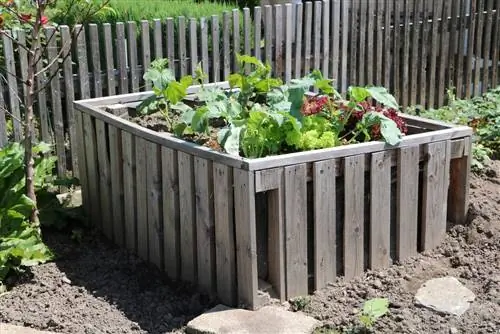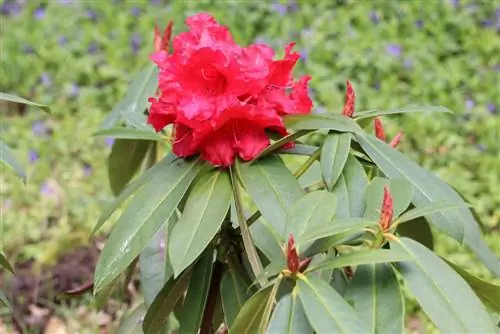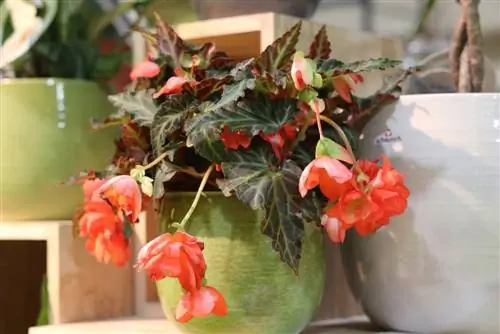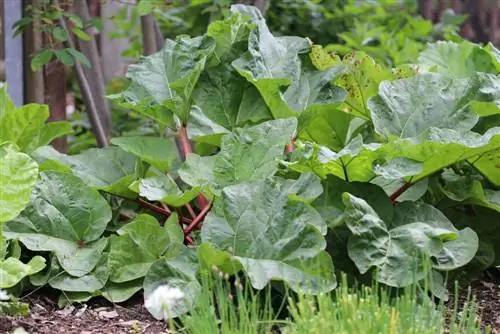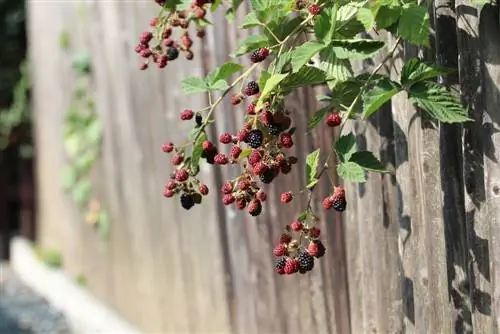- Author admin [email protected].
- Public 2023-12-17 03:39.
- Last modified 2025-01-24 12:45.
Raised beds protect the gardeners' backs and allow vegetables to be grown even in limited areas, such as balconies or terraces. With our help you can determine the optimal location yourself based on relevant criteria.
What matters?
Not every raised bed needs the same location. Therefore, as part of your planning, check which issues are particularly important to you and your planting goal:
Space requirement
- actual footprint of the raised bed
- Work area all around, or at least on one or two sides for all necessary work on the raised bed
- no space conflicts with other uses, e.g. fixed furniture
Tip:
Combine movement areas around the raised bed with other “flexible” areas on the terrace or balcony. How to save space through multiple use.
Accessibility
- General accessibility for setting up and maintaining the raised bed
- Proximity to water supply: via tap accessible within hose length
- convenient location for storage space for garden tools, watering cans etc.
- BUT: difficult access for children, pets and other, possibly unwanted people and possibly wild animals (e.g. near the forest)
NOTE:
When accessing the raised bed, please note that a balcony in the living room or bedroom is less favorable than an open space in front of the kitchen, for example because of dirt on shoes, clothing and tools.
Light, air and rain
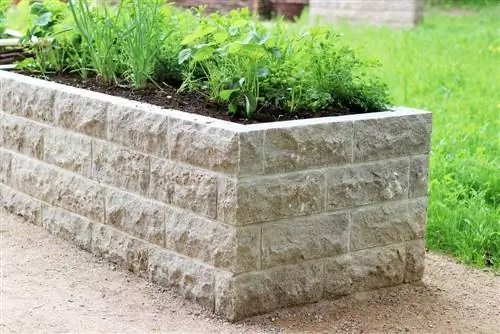
The location significantly influences the amount of light, air and precipitation that the plants planted in the raised bed receive. How much of which is ideal depends on the plants used. However, some general statements can still be made about the environmental influences on raised beds:
Light
None of the common garden vegetables prefer a partially shaded or even shady location. Therefore, avoid heavily shaded locations for the raised bed, for example on north sides.
Air
Many plants don't like wind. Therefore, choose protected locations on the house wall. However, good ventilation ensures that excessive moisture is well removed. Diseases and pests are also less able to establish themselves in well-ventilated areas. So avoid these locations:
- under roofs: terrace roofs, carports etc.
- with multi-sided enclosures, e.g. between a house, garage and shed
- in garages or sheds
- in poorly ventilated greenhouses
Water
Every plant needs water in order to survive and thrive over the long term. Intensive direct irrigation can reduce the need for watering. However, sensitive plants and early development stages after germination suffer from too much direct precipitation. Protected layers on house walls reduce the rain load. However, natural irrigation remains.
ATTENTION:
When it comes to water and rain in your raised bed, don't just think about the water that gets into the raised bed. Being close to a floor drain helps you drain excess water from the bed in a targeted manner.

